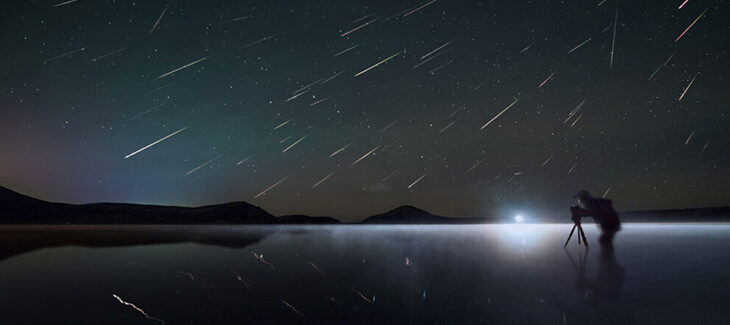The Draconid meteor shower is an annual astronomical event that occurs between October 6 and 10. The peak activity of this meteor shower happened on the night of October 8-9, 2023. Dragonids are known for their brief but spectacular displays, with the two most notable occurring in 1933 and back in 1948.
Another meteor shower that will grace the sky in October 2023 is the Orionid meteor shower. This event takes place between October 16 and 26 and is caused by the famous Halley’s Comet. The peak of Orionid activity was predicted for October 21-22. Meteor showers such as the Orionids and Draconids are characterized by a large increase in the number of meteors visible in the sky when the Earth crosses the orbit of a comet or other celestial debris.
November 2023. Meteor showers
Southern Taurides November 4-5, 2023. It is essential to distinguish meteor showers from meteor streams. Meteor showers such as the Draconids and Orionids consist of meteors that burn up in the atmosphere and do not reach Earth. Meteor showers, on the other hand, include meteorites that fall to Earth. Since the Southern Taurides fall under the meteor shower category, observers can expect a visually stunning display of meteors burning up in the Earth’s atmosphere.
The Northern Tauride meteor shower, known for its slow and bright meteors, will be active on November 11-12, 2023. This meteor shower is visible for many days, providing ample viewing opportunities if the moonlight does not interfere with the visibility of the meteors.
Taurids radiants. Credit: Active Meteor Showers
Another famous meteor shower in November 2023 is the Leonid meteor shower. The Leonids, originating from Comet Tempel-Tuttle, can be observed annually around November 17. This meteor shower is known for its intense and fast meteors, which often create spectacular images in the night sky.
The Alpha Monocerotis meteor shower is also expected to grace the skies on November 21-23, 2023. Although not as well known as the Northern Taurides or Leonids, Alpha Monocerotids is still a fascinating celestial event. This meteor shower is named after the constellation of the Unicorn, where its radiant is located.
Meteor showers in December 2023 and January 2024
The Geminid meteor shower is one of the most anticipated celestial events on December 14-15, 2023. Meteor showers like the Geminids occur when Earth passes through debris trails left by a comet or asteroid, causing the meteors to burn up in the atmosphere before reaching the planet’s surface. These meteors appear to be emanating from the constellation Gemini, which gave the stream its name.
Eliot Herman, in Tucson, Arizona, captured this bright earthgrazer meteor on December 13, 2020. Credit: Author Eliot Herman / Earth Sky
Ursida meteorite shower. Although not as famous or spectacular as the Geminids, the Ursids still offer a celestial event worth celebrating for stargazers. The December 21-22, 2023 Ursida meteor shower is caused by debris from Comet Tuttle, and its radiant point is located in the constellation Ursa Minor.
The Quadrantids meteor shower takes center stage as one of the most beautiful meteor showers of the year. The Quadrantids are unique in that they have a very narrow peak, which means that the best time to observe this meteor shower is just a few hours after its peak activity on January 3-5, 2024. The Quadrantids emission point is located in the constellation Volopas but was historically associated with the now-defunct Quadrantids constellation Muralis, hence the name.
Photographer Jeffrey Berkes took the image of the Quadrantid meteor shower over the Florida Keys in 2012. Credit: Photographer Jeffrey Berkes / Space.com
Banner image: The Perseid meteor shower, seen here at Lake Duolun, China, occurs when Earth passes through a stream of debris left by the comet Swift-Tuttle. Credit: Haitong Yu / Gett
ImagesImage credit:
https://www.snexplores.org
https://www.amsmeteors.org
https://earthsky.org
https://www.space.com


